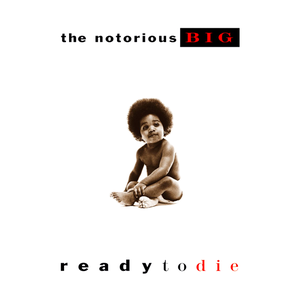
Published on Dec 12, 2003
Like movies, some of the best albums are defined by a few
unforgettable sequences: the horse scene in the first
Godfather movie, the chest-bursting scene in
Alien movie. For The Notorious B.I.G.’s major label debut,
Ready to Die, the album is decorated with similar ‘moments,’
such as the obscenely funny “Interlude,” rapping about living on
five-cent gum and blowing his ownbrains out at the conclusion of
the album, after over an hour of taunts, bravado and playa
fantasies.
While 2-Pac usually excelled at making general observations
about life as a young black man through the eyes of an observer,
Biggie Smalls was able to personalize his experiences: the poverty,
drug dealing, and later, the excess of fame. “My momma’s got cancer
in her breast/don’t ask me why I’m motherf***ing stressed,” Biggie
rants on “Things Done Changed.”
Before Sean “Puffy” Combs was more worried about selling clothes
than making memorable albums, he gave
Ready to Die its ambitious, cinematic flow. For every
laid-back, Cristal-soaked party anthem (“Juicy”), a morose,
regretful tune followed. “I don’t want to live no more,” is the
main chorus of “Everyday Struggle.” Even songs that appear to give
reason to why groups like the PMRC still are in existence (“Me and
My Bitch”) contain moments of stark vulnerability on par with
Elliot Smith, as Biggie ends the song with one of his best friends
getting killed.
Biggie Smalls claimed he never liked writing down his lyrics,
opting to rap from the top of his head. With
Ready to Die, he captured the dread and helplessness of the
life of a dealer as well as some of the most over-the-top party
anthems of the ’90s. Even in a world where it’s becoming
increasingly harder to shock people, listening to the XXX-rated
“#!*@ Me (Interlude)” can still leave me squirming, laughing and
cringing at the same time as the song is a minute-and-a-half
hardcore porn track, featuring Biggie.
The album closes with the harrowing “Suicidal Thoughts.” While
Ready to Die contained as many boasts as N.W.A.’s and
2-Pac’s best works, Biggie Smalls always excelled at following up
every tale of violence with its stark consequence, on the victim
and the perpetrator of the action. It’s an incredibly dark album,
making it all the more of a difficult listen, knowing Biggie
Small’s tragic fate a mere three years after
Ready to Die‘s release. Even if you’re not a rap fan, the
storytelling Biggie weaves throughout the album remains some of the
most vivid examples of verbal cinematography on an album. Almost
ten years after its release,
Ready to Die remains a landmark achievement.